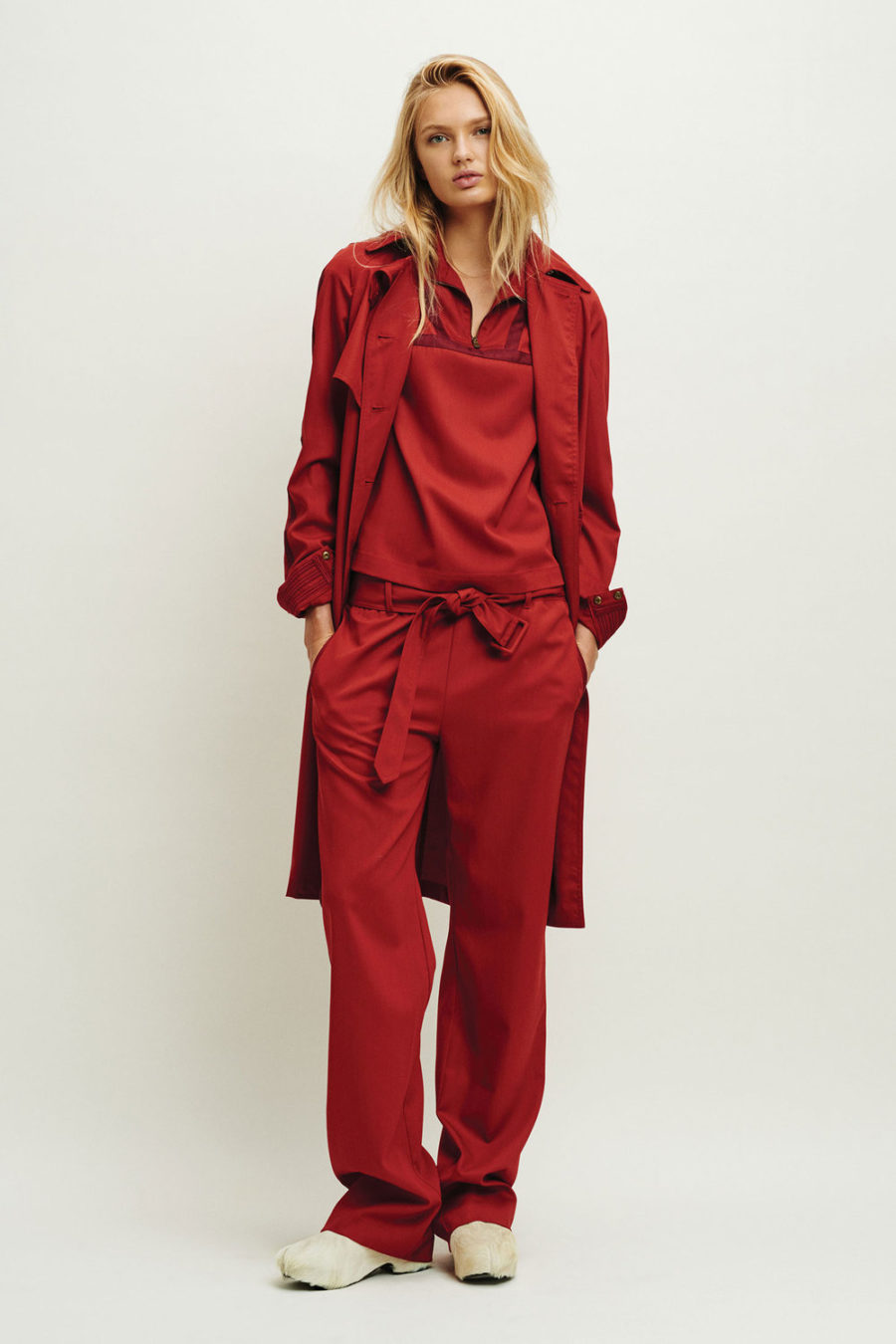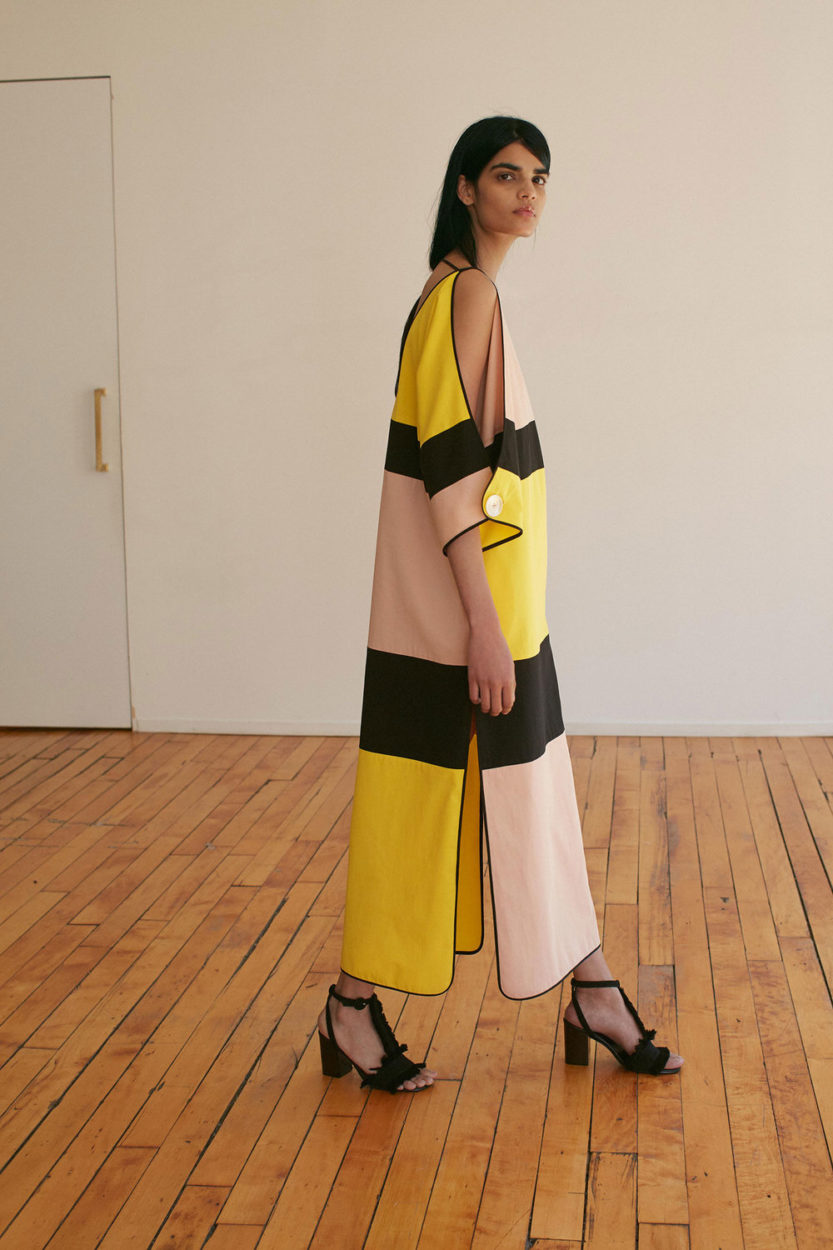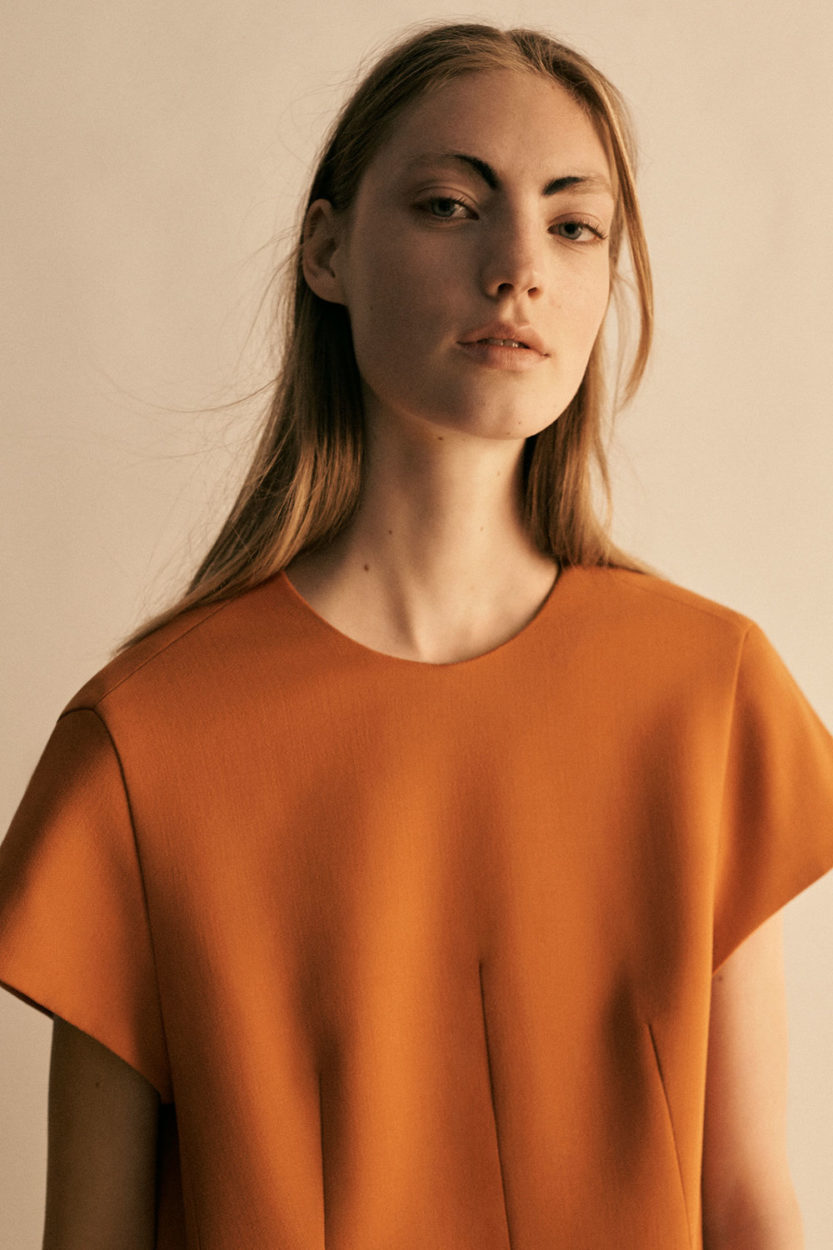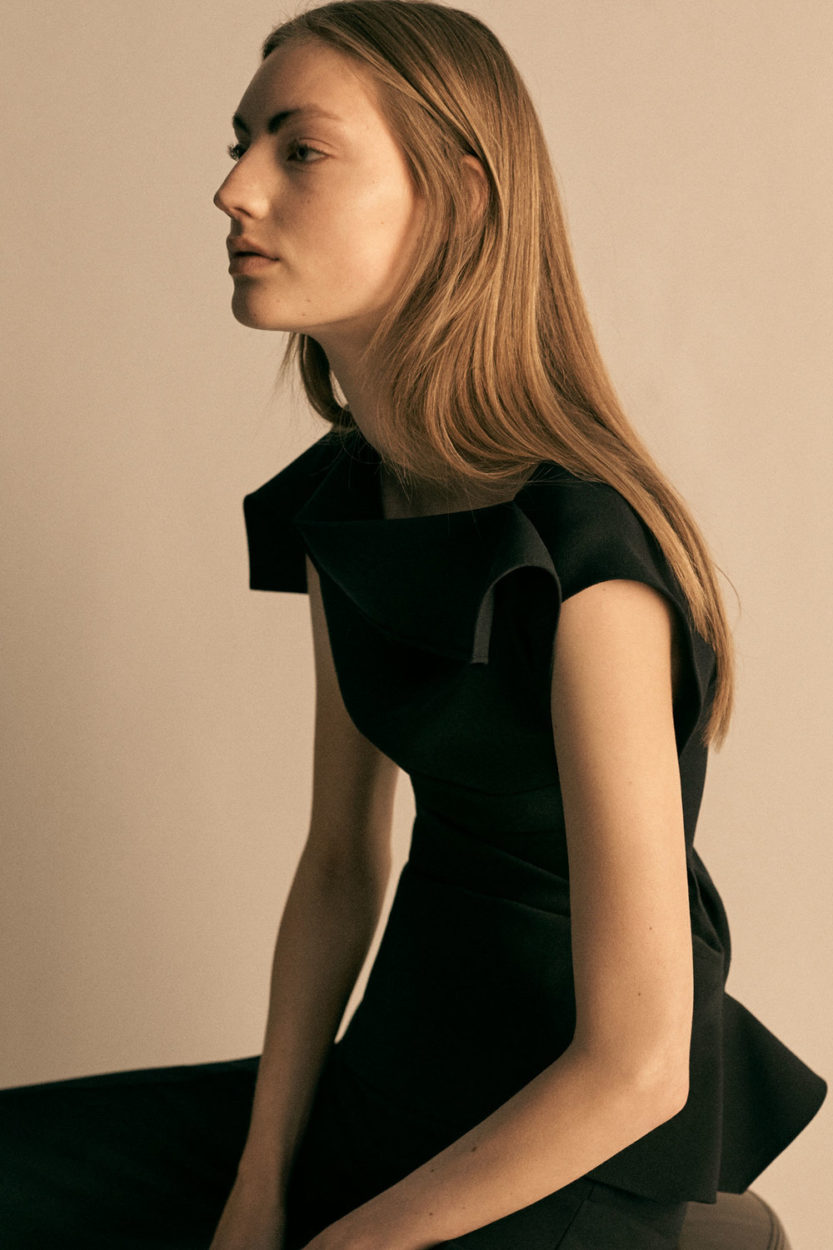I am not an easy person, I am told. Certainly, from a sartorial perspective, this is true: My clothes and hair are disheveled, my eyebrows wild, my getups seem to require a good deal of thought even to appear plausible. And so I have always felt wistfully about aesthetics that demand less work.
At first glance, clothes right now are easy to wear: clean, unfussy, modern. Tops are ’90s-boxy; skirts are structured but casual; mules are somehow both sleek and substantial. The work of such clothes, one initially feels, is in the buying. Once the closet is well-stocked with such sophisticated basics, dressing will be effortless.
You’d be forgiven for mistaking these trends as a move toward a sort of enlightened aestheticism, perhaps even a bit of puritanical austerity. I did. I thrilled to the high necks and bared shoulders of the Bottega Veneta runways, the easy drape of a Chloé tunic, the spare almost-classicism of cool girls in their Common Projects sneakers. At first glance, I hailed the no-frills clogs, the square blouses, the wide-legged pants. How wearable, I thought. How democratic. For a moment, I envisioned myself as one of those stylish, confident women I’ve seen sweeping out of galleries and down the streets of SoHo, and rejoiced at the increasing, near-instant proliferation of the clean lines in fast-fashion stores like Zara. And then I tried them on.
We are in that most horrible of times: an Effortless Moment. Some years we em-brace volume and underpinning, recherché silhouettes and bold lashes, ’70s languor or ’80s decadence. These are looks that scream effort, even require a measure of visible expertise: a perfectly applied red lip, a visibly curled Kate Bush bang, a corseted Helmut Newton waist. I love these periods in our collective history. I am nostalgic for them. Because the open secret is this: Effortless is the hardest look to do.
Lean, artless silhouettes are unforgiving. They give no quarter to an untoned thigh or a flabby upper arm. Sometimes in such cases, it’s a matter of bad tailoring—only the expensive, genuine article will do. Normally, I try to follow those old Seventeen magazine edicts and “test a trend” at the low end, saving my money for classic big-budget purchases like coats and boots. This seemed like a perfect moment to test clean lines in a low-stakes way, and I slipped into an H&M with my sites firmly set on a boxy blouse. When this looked appalling—somehow asexual and matronly at once—I tried my luck at a high-end boutique whose serene interior spoke of Father John Misty and one of those expensive, crotch-smelling candles. I slipped into a linen tent that resembled the most expensive Eileen Fisher my mom never wore in the ’90s and a Céline-esque “top” that made me look like Mother Ginger in a community-theater production of The Nutcracker. Here is what I found. This moment is democratic in one respect: Every price point looks equally awful.
The reasons for this are simple enough. Modest, high necklines do not make allowances for large busts, tenting cartoonishly anywhere north of a B cup. (Indeed, many don’t even allow for the wearing of a bra.) Jaunty midi skirts chop the leg at its thickest point; stubby, high-fashion hooves cut horizontally across the foot and provide none of the lengthening illusion of a daintier pump. I won’t even get into denim.
Fashion has never pretended to favor the average woman’s body—everything, definitionally, is designed for a lean and elongated form. But there is something particularly infuriating about the current crop of smug, downtown silhouettes that depend on rangy, perfect bodies—along with the expensive wash-and-go-haircuts, and the bare faces that look so good because they’ve been pampered and creamed to within an inch of their lives.
And it’s not that anyone is really pretending not to have worked, any more than we did in the age of girdles and bullet bras. It’s just a different sort of showing off. I just so happen to do yoga four times a week; I can look deliberate and smart in unflattering garments. Oh, and I have no bunions or unsightly lumps on my feet, so I can wear those $500 old-lady Maryam Nassir Zadeh ballet shoes sported by all the fashion girls—when I’m not being barefoot on my immaculate floors.
I’ve read plenty of rants about the un- realistic expectations propagated by Hollywood—all those stars who deny plastic surgery and credit water and clean living for their unlined faces; the post-pregnancy bodies that magically bounce back without—allegedly—the daily intervention of a trainer; the mythical hearty appetites trotted out by svelte subjects in magazine profiles. Perhaps we’ve always indulged this fantasy, but the tenets of aspiration seem to have changed: Now, wealth means not just the means to look perfect, but a tacit agreement to have done so magically.
Our homes, it seems to me, mirror this. The ideal is clean and spare, “livable,” filled with light, and open-plan kitchens, and acres of gleaming windows. In reality, these probably take no less work to maintain than a tchotchke-filled 1980s penthouse complete with tapestries and maids’ quarters. And no one who knew the difference would fail to see them for the status symbols they are. (It will surprise no one to learn that my own apartment is cluttered, rumpled, and usually dusty, with many generations’ worth of junk.)
The Trumps and Real Housewives of the world will always fly the flag for gaudy, capital-W wealth. Their effort is visible, tangible. Indeed, this has probably spurred the trend towards a quieter, leaner form of sophisticated excess. Bandage dresses and curled hair are now the purview of reality stars and hyper-sexed teenagers. True glamor means a nude manicure and a square-cut gossamer sack through which one can glimpse an expensively shaped figure. It’s a sort of aesthetic false modesty, and very, very difficult to pull off without tremendous expense and, that greatest of all modern luxuries, time. Tons of work has gone into the Effortless Look, but the time is differently apportioned. So much is back-of-house—workouts, diets, treatments—so that one can throw on one’s mom jeans with an illusion of immediate ease. Why this is better, however, is unclear.
Trying is scary—or, rather, admitting that you’re trying is. We all try. There is no shame in admitting it and in owning it, and even in failing. William James wrote, “Every good that is worth possessing must be paid for in strokes of daily effort.” And who are we really fooling, anyway?
Sadie Stein is a former deputy editor at the Paris Review. Her work has appeared in The New York Times Book Review, T Magazine, and in Bon Appétit. She last wrote “Barbie Couture“ for Surface.













